For brewhouse heating method, there have three styles:
Steam heating method, electric heating method, direct fire heating method.
Otherwise, we need to choose different kinds of heating method due to some reasons, certainly we need know well about the various steam heating method1.Steam heating methodPros: It can provide evently heating and the temperature easy control. It won’t scorch the wort.
Cons:For steam heating method, it need steam boiler. There have a lot of strict demands for export and the cost is high.2.Electric heating methodPros: No need extra equipment, so no need extra investment.
Cons:It directly heating by electric heating tube, the partialy temperature (around the tube)dircetly contact with the wort is higher than other parts. There has a risk to scorch the wort and influence the taste. The electric heating tube maybe also influence the whirlpool.3.Direct fire heating methodIt need change the structure of tanks and there has a direct fire room. The cost also is high.
Besides also need burner.
Edited by Derrick
Sales Manager in Tiantai Company
Email:brewery@cnbrewery.com
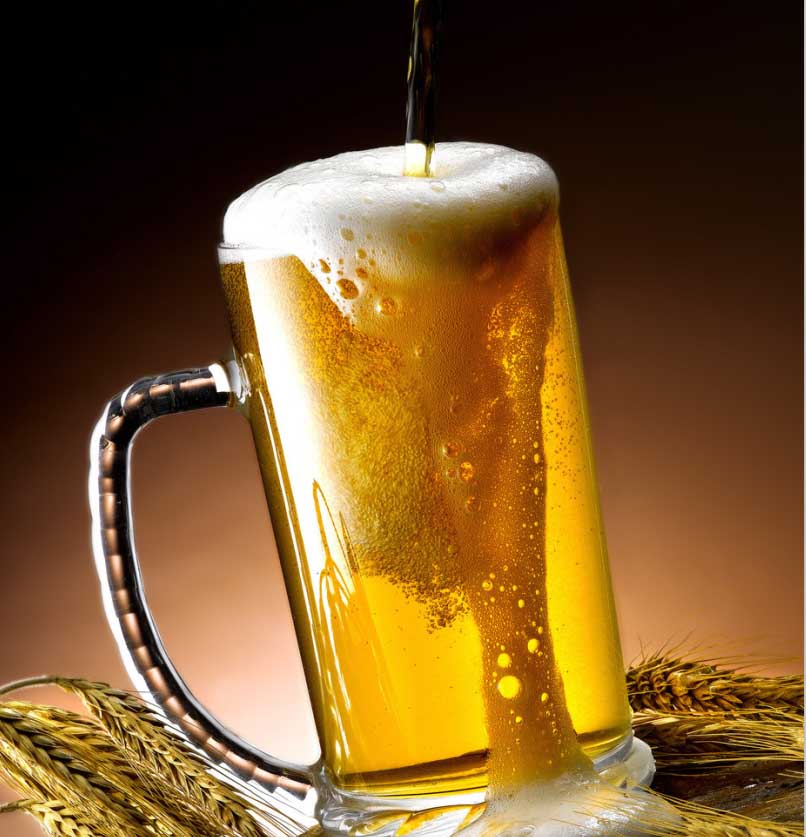 The pros and cons for different kinds of heating method / Brewery Setup Blog / beer equipment for sale, chinese beer equipment manufacturer and suppliers, beer equipment price & cost
The pros and cons for different kinds of heating method / Brewery Setup Blog / beer equipment for sale, chinese beer equipment manufacturer and suppliers, beer equipment price & cost
1) Heat water in your boil kettle or hot water tank if you have one2) Transfer hot water to your mash tun and add grain3) Ensure grain and water (mash) are thoroughly mixed and let it all sit for an hour4) While you are mashing heat another 5 gallons of water5) Transfer the hot water to your bottling bucket or, if you bought one, your hot liquor tank6) Elevate the hot water so that it is above your mash tun and begin the sparge process7) Collect your sweet wort in your boil kettle8) Once that is done, boiling wort for one hour.9) Many hot breaks and hops will be cleared during Whirlpooling process.10) Got to heat exchanger to cool wort to fermentation temperature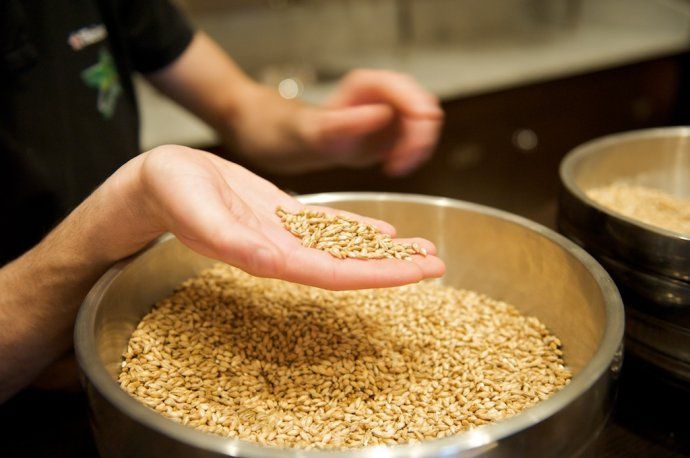 How to brew beer with all grain? / Brewery Setup Blog / beer equipment for sale, chinese beer equipment manufacturer and suppliers, beer equipment price & cost
How to brew beer with all grain? / Brewery Setup Blog / beer equipment for sale, chinese beer equipment manufacturer and suppliers, beer equipment price & cost
There is a whole science to this. Softer water for lighter pilsner style beers, harder water for heavy stout style beers. Pure water is not recommended used for brewing because some amount of the three ions (sodium, chloride, and sulfate) is generally considered necessary for some part of the flavor profile.If by "pure water" you mean something like distilled water then there are two answers here. If you are extract brewing then "pure water" is OK. But if you are brewing all grain recipe then "pure water" is not OK.Ions in brewing water help setting the mash pH to optimum levels and will impact the flavor of the beer. In extract brewing, the mash has already been done for you, so you can use de-ionized water. The extract itself will have mineral ions in it, residual from the mash, and that ion content will probably be fine from a flavor perspective.The main point is to use some sort of filter if you are unsure about your tap water, or buy some water, and start brewing.Edited by LauraSales Manager in Tiantai CompanyEmail: trade@cnbrewery.com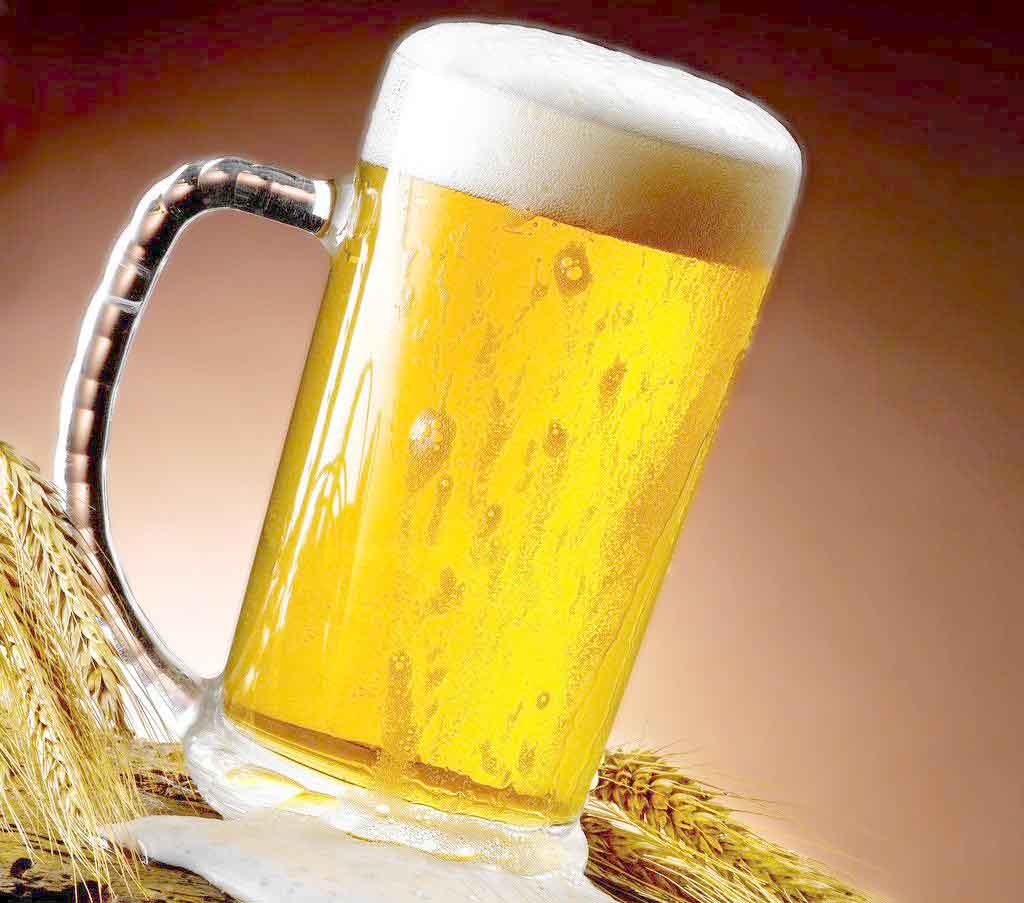 Can I brewing with pure water? / Brewery Setup Blog / beer equipment for sale, chinese beer equipment manufacturer and suppliers, beer equipment price & cost
Can I brewing with pure water? / Brewery Setup Blog / beer equipment for sale, chinese beer equipment manufacturer and suppliers, beer equipment price & cost
For the nano or micro brewery, the CIP system is always very simple, caustic tank and sterilization tank. Of course, it is workable and reasonable. After all, the capacity of nano and micro brewery is not very large, which is easy to clean thoroughly. But for industrial brewery, >=5000L, the ideal CIP system should have 5 tanks, caustic tank, acid tank, bactericide tank, sterilization water tank and recycle sterilization water tank.1.caustic tankThe caustic tank is used to store the caustic liquid. Normally, this tank must be heated, electric or steam, so the caustic liquid can be heated to a certain temperature to remove the organic contaminant.2.acid tankThe acid detergent can be nitric acid etc, which can remove the beer stone formed on the exterior shell.3.bactericide tankThe bactericide tank is used to store some bactericide with a certain concentration.4.sterilization water tankThe sterilization water is able to wash the bactericide remained in the tank, which can improve the sterilization of tank further.5.recycle sterilization water tankThis tank is mainly used for recycle the sterilization water for prewashing other tanks.Besides, the pump, the feeder of acid& caustic&bactericide&sterilization water and filter should also be added in the CIP system.Edited by VickySales manager in Tiantai CompanyEmail: tank@cnbrewery.com  The Ideal CIP system for industrial brewery / Brewery Setup Blog / beer equipment for sale, chinese beer equipment manufacturer and suppliers, beer equipment price & cost
The Ideal CIP system for industrial brewery / Brewery Setup Blog / beer equipment for sale, chinese beer equipment manufacturer and suppliers, beer equipment price & cost
Does the whirlpool tun need to be insulated? Most of brewers would suggest it should be insulated ideally.Firstly, for the wort, the hotter it is, the better the chance of maintaining sterility.Secondly, when the wort goes into the heat exchanger with a high temperature, it can reclaim the hottest water possible for the next mash, which is also very nice.Thirdly, the whirlpool tun with insulation is more safe design. If the whirlpool tun is not insulated, at the high temperatures the brewers operate at, a burn is not something they want to experience by inadvertently coming in contact with it while in service. What do you think? If you have any opinion, feel free to tell us.Edited by VickySales Manager in Tiantai CompanyEmail: tank@cnbrewery.com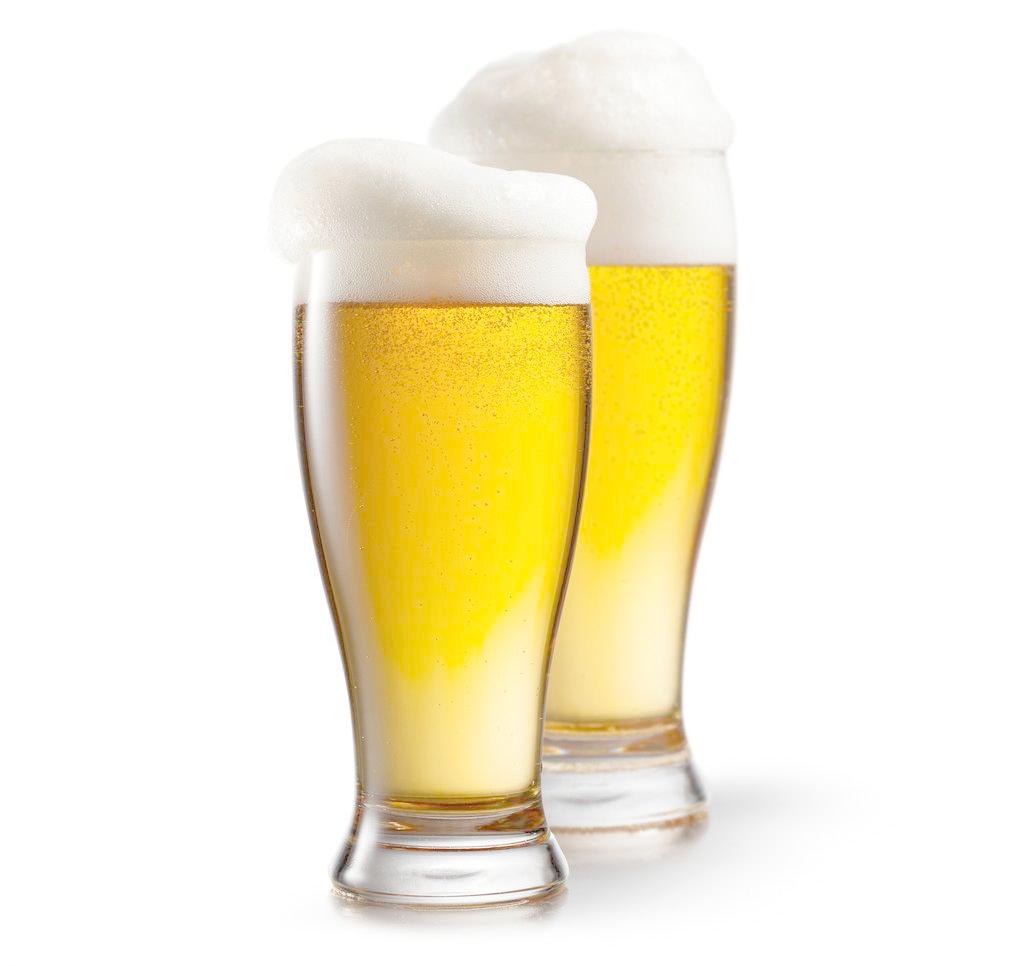 Does the whirlpool tun need to be insulated? / Brewery Setup Blog / beer equipment for sale, chinese beer equipment manufacturer and suppliers, beer equipment price & cost
Does the whirlpool tun need to be insulated? / Brewery Setup Blog / beer equipment for sale, chinese beer equipment manufacturer and suppliers, beer equipment price & cost
In the process of brewing, the brewmaster usually add different types hops for brewing different styles beer. However for clarify the wort, we also need filter the substance after add the hops, they can go through different process, for example whirlpool. Also filter by hop backs.But what’s the difference between them?The function of whirlpool and hop backs is different though both of them are used for filter.For the whirlpool tank can remove the hot coagulum and hops Pellets.For the hop backs, it has filter plate inside.It is used to filter the Leaf-hops (some brewmaster add the leaf/fresh hops into the wort after whirlpool to add more aroma into the wort).However the whirlpool can’t remove the Leaf-hops.Edited by DerrickSales Manager in Tiantai CompanyEmail:brewery@cnbrewery.com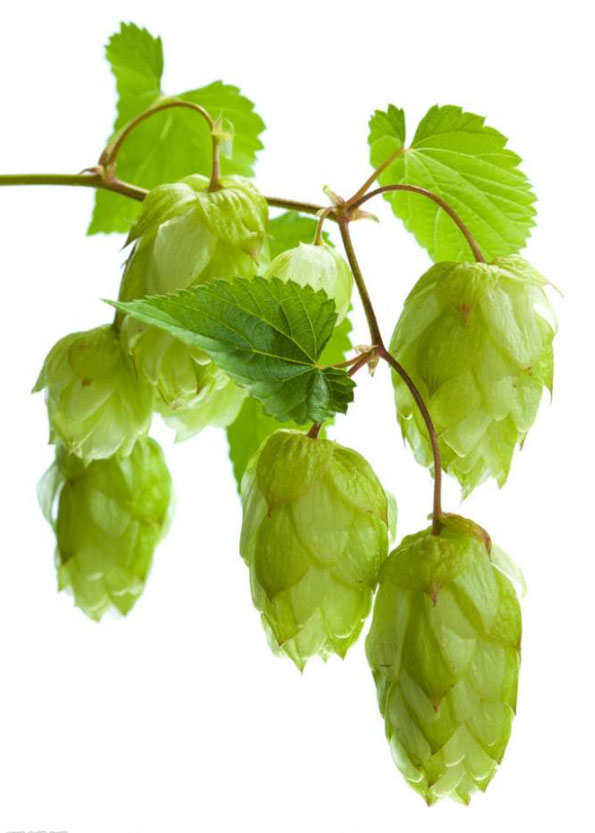 What’s the difference between whirlpool and hop backs? / Brewery Setup Blog / beer equipment for sale, chinese beer equipment manufacturer and suppliers, beer equipment price & cost
What’s the difference between whirlpool and hop backs? / Brewery Setup Blog / beer equipment for sale, chinese beer equipment manufacturer and suppliers, beer equipment price & cost
The hops usually used unfertilized female flowers,female curlicue is green or yeallow- green. The shapes like pipecone, and it is indispensiable substance need to add in the beer brewing. For the functions please check follows;
1)It gives beer refreshing bitterness and a pleasant franrance.
2)Increase the ability of antiseptic for beer and wort.
3)Enforce the foam retention of beer.
4)Boiling the wort with hops together, it can promote protein coagulation, also is good for clarify wort and biological stability of beer.
Edited by Derrick
Sales Manager in Tiantai Company
Email:brewery@cnbrewery.com
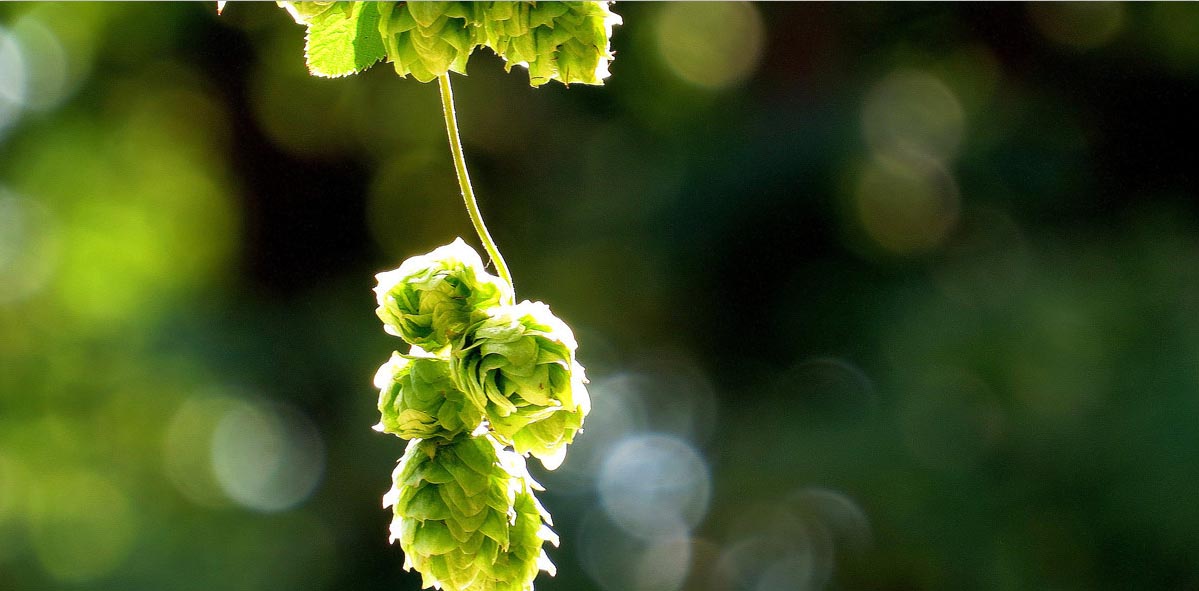 The functions of hops in beer brewing / Brewery Setup Blog / beer equipment for sale, chinese beer equipment manufacturer and suppliers, beer equipment price & cost
The functions of hops in beer brewing / Brewery Setup Blog / beer equipment for sale, chinese beer equipment manufacturer and suppliers, beer equipment price & cost
The traditional way to add hops is use whole hops, but this way is not so economic. The hops utilization of active ingredients only about 30%. For improving the hops utilization,transport and storage more convient, then people develop many kinds of hops products.So what’s the advantages of hops products?1)Small volume, easy transport and storage, also with lower cost.2)Greatly improved the utilization of hops active ingredients which has high bitterness substance yield.3)The hops products can storage without time limit. So the company can storage hops products when have good harvest and won’t influence by price fluctuations.4)Adopt hops products, it don’t need hops backs, with whirlpool sedimentation tank to seperate is OK. Also simple mash process.5)The hops products can accurate control bitterness content, also can realize automatic measurement.Edited by DerrickSales Manager in Tiantai CompanyEmail:brewery@cnbrewery.com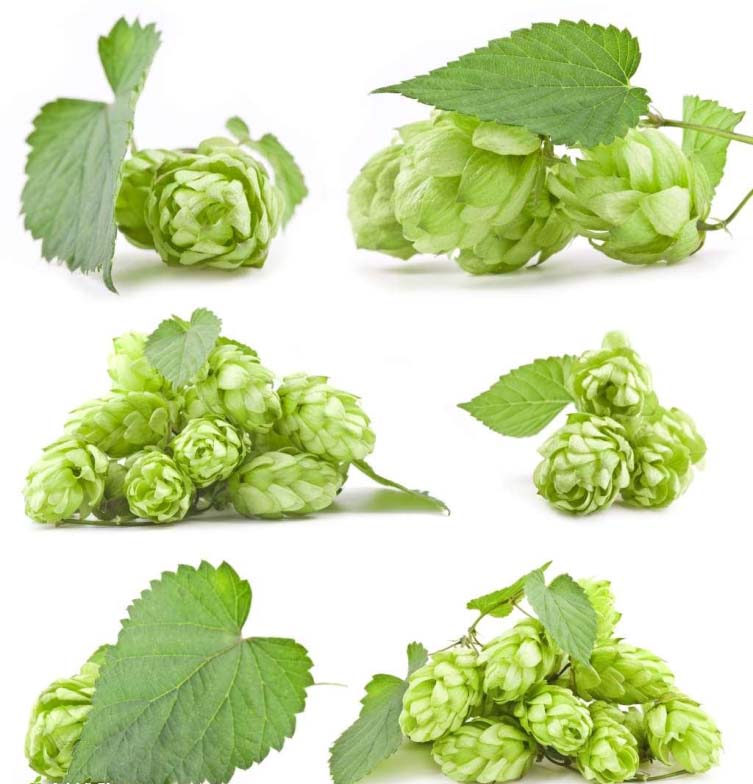 The advantages of hops products / Brewery Setup Blog / beer equipment for sale, chinese beer equipment manufacturer and suppliers, beer equipment price & cost
The advantages of hops products / Brewery Setup Blog / beer equipment for sale, chinese beer equipment manufacturer and suppliers, beer equipment price & cost
Some customers from Europe may prefer to use the spunding valve which the brewmaster can adjust the pressure of the valve by themselves. Then the question is: Do I still need the fixed pressure valve for my tanks as well?
The better answer is yes exactly!
First, our standard valve with fixed pressure which will be the baseline for protecting your tanks. As we know the spunding valve is manual adjusted, there may be some errors happens sometimes.
Second, our standard valve is breath valve. It is not only suitable for adjust the over pressure. But also will help to avoid the negative pressure of your tanks which may makes your tanks dented. It is also very important thing that some brewmasters may ignored.
Edited by Laura
Sales Manager in Tiantai Company
Email: trade@cnbrewery.com 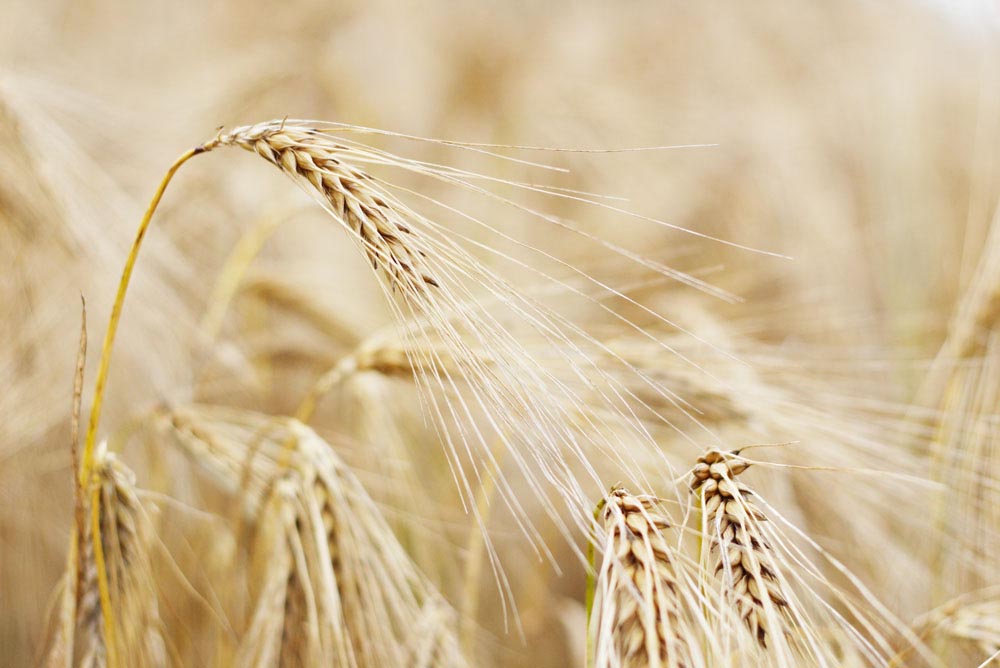 Does the fixed pressure valve also needed if I use spunding valve? / Brewery Setup Blog / beer equipment for sale, chinese beer equipment manufacturer and suppliers, beer equipment price & cost
Does the fixed pressure valve also needed if I use spunding valve? / Brewery Setup Blog / beer equipment for sale, chinese beer equipment manufacturer and suppliers, beer equipment price & cost
About the cable, as you know, different countries and areas have different requirements about the wires, like in China four wires(three fire wire and one Zero wire) while as Charles's is five wires. This question is caused by our miscommunication, customer did not tell us, we failure to confirm with him. So please confirm with your local if yours is five wires(three firing lines, one Zero line and one ground wire)?I can let our sourcing department help to source in China. But we suggest you source locally if possible.
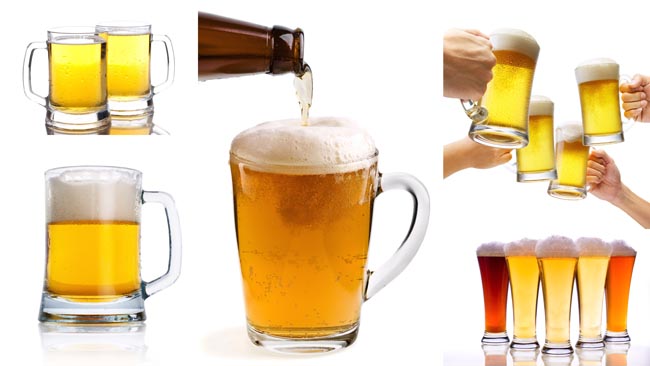 Ensure that the correct type of cable is sent with the system / Brewery Setup Blog / beer equipment for sale, chinese beer equipment manufacturer and suppliers, beer equipment price & cost
Ensure that the correct type of cable is sent with the system / Brewery Setup Blog / beer equipment for sale, chinese beer equipment manufacturer and suppliers, beer equipment price & cost
The laser cut filter in the Mash tun, was a bit weak and when full it flexed allowing grain to pass through. It also rested on the vessels sloping bottom. What has been done to strength the screens and do they now sit on lugs or a ring ?Answer: Yeah, we did have added support under filter.
Filter flexed is caused by pump vacuumizing during wort lautering process. It is a common problems which will happen on new brewer, so now we will equip wort grant with wort collect rings to avoid this situation.
We have two type for option:
1) Glass grant with wort collecting rings and back flush ring:
2) Stainless steel grant with floating ball , wort collecting rings and back flush ring.
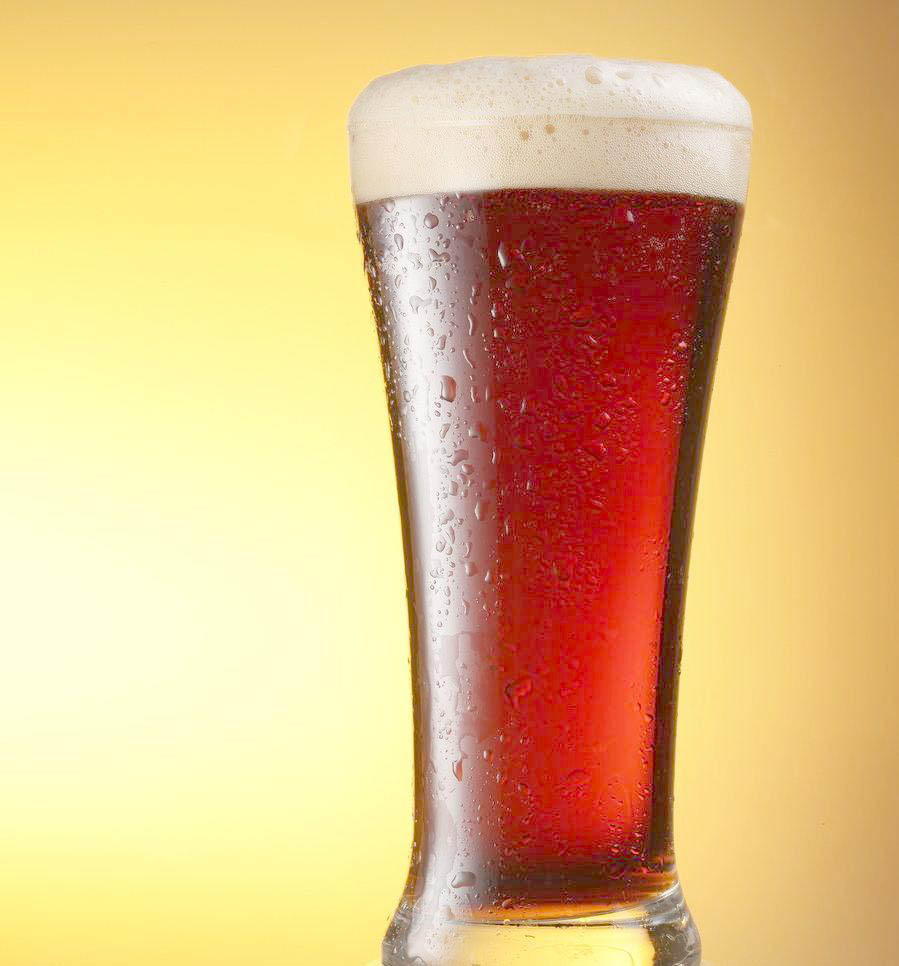 The laser cut filter in the Mash Lauter tun / Brewery Setup Blog / beer equipment for sale, chinese beer equipment manufacturer and suppliers, beer equipment price & cost
The laser cut filter in the Mash Lauter tun / Brewery Setup Blog / beer equipment for sale, chinese beer equipment manufacturer and suppliers, beer equipment price & cost
In the first generation of chillers, the Freon needs to goes out from the chiller to the Glycol Water Tank through copper piping. Now we are using the second generation, by which the water will comes from GWT to chiller and back to GWT after being cooled. Please kindly check the above picture.There are mainly four advantages of the second generation chillers:1). The compressor with longer lifetime. As you know in the 1st generation, the Freon need goes a long distance which may need the compressor offer bigger power. So it must will shorter the compressor's lifetime.2). The piping connection is more easily compared with 1st generation. There are copper piping in the 1st generation which may need welding when you use it.3). With higher heat exchange efficiency. As we know in the 1st generation, the Freon usually goes into the GWT with very low temperature. Then the water near the copper piping may iced. It will lower the heat exchange efficiency.4). Higher fluidity also better for heat exchanging. Compared with the 1st generation chiller. The water in 2nd generation with a higher fluidity which is better for heat exchange.Edited by LauraSales Manager in Tiantai CompanyEmail: trade@cnbrewery.com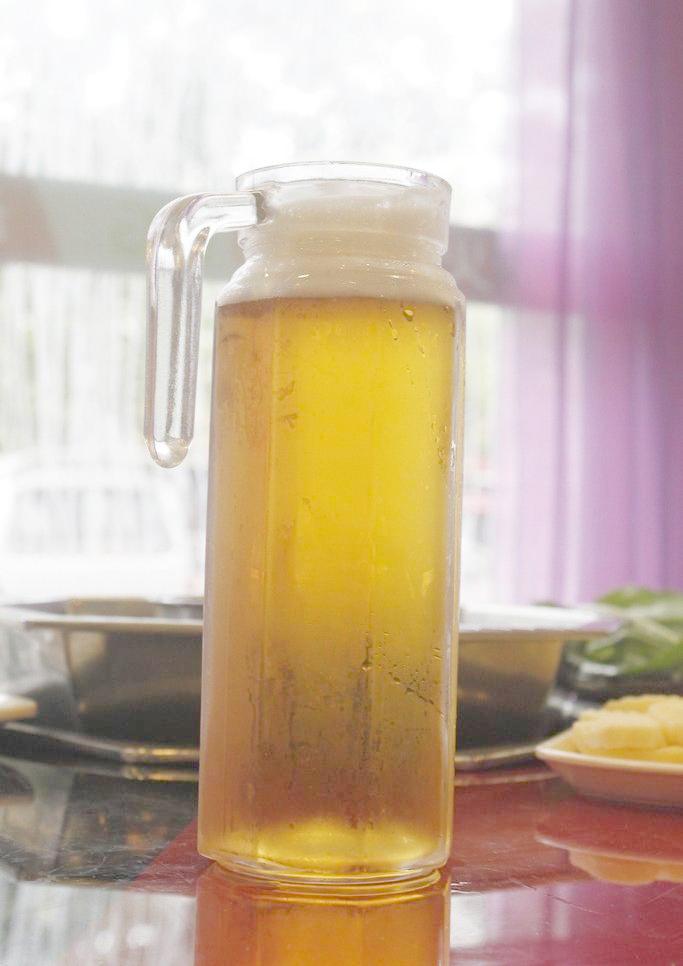 The advantages of the second generation chillers / Brewery Setup Blog / beer equipment for sale, chinese beer equipment manufacturer and suppliers, beer equipment price & cost
The advantages of the second generation chillers / Brewery Setup Blog / beer equipment for sale, chinese beer equipment manufacturer and suppliers, beer equipment price & cost
1.Two Pump Glycol Design. The two pump design simply provided constant flow through the chiller evaporator at all times.With a dedicated Circulation Pump (Pump 1) the highest evaporator efficiencies are achieved at all times.The dedicated Process Pump (Pump 2) is sized specifically for the brewery load, no longer was our flow limited to what could be pushed through the chiller evaporator.This design has improved continuously over the years with the addition of the center baffled storage tank, improved pump operation, high efficient evaporators, and many other features and controls.Throughout the development process, there have been two main chiller system controls; a thermostat to control the glycol solution temperature and a flow switch to protect from freeze up damage.Thermostats have evolved from a basic mechanical device to today’s microprocessor or PLC based controllers that actually trend and anticipate temperature loads and changes. In addition to superior temperature control, brewers are requesting the remote monitoring and notification ability these controllers provide.The Freeze Protection has also shifted from the mechanical paddle switches to refrigerant pressure monitors, highly accurate and reliable flow sensors, and pump motor monitoring providing unmatched system protection.2.Today’s systems are supplied with compact high efficient evaporators, providing very close approach temperatures (the Temperature Difference between the refrigerant and glycol) plus providing reliable and durable operation. The introduction of electronic expansion valves has helped increase the operating efficiencies and reliability of today’s systems.The single biggest advancement is the total system control now provided. No longer does a customer need to purchase the brewery chiller system from multiple vendors and assemble onsite, today there are a number of chiller system manufacturers providing the total package for just about any size facility.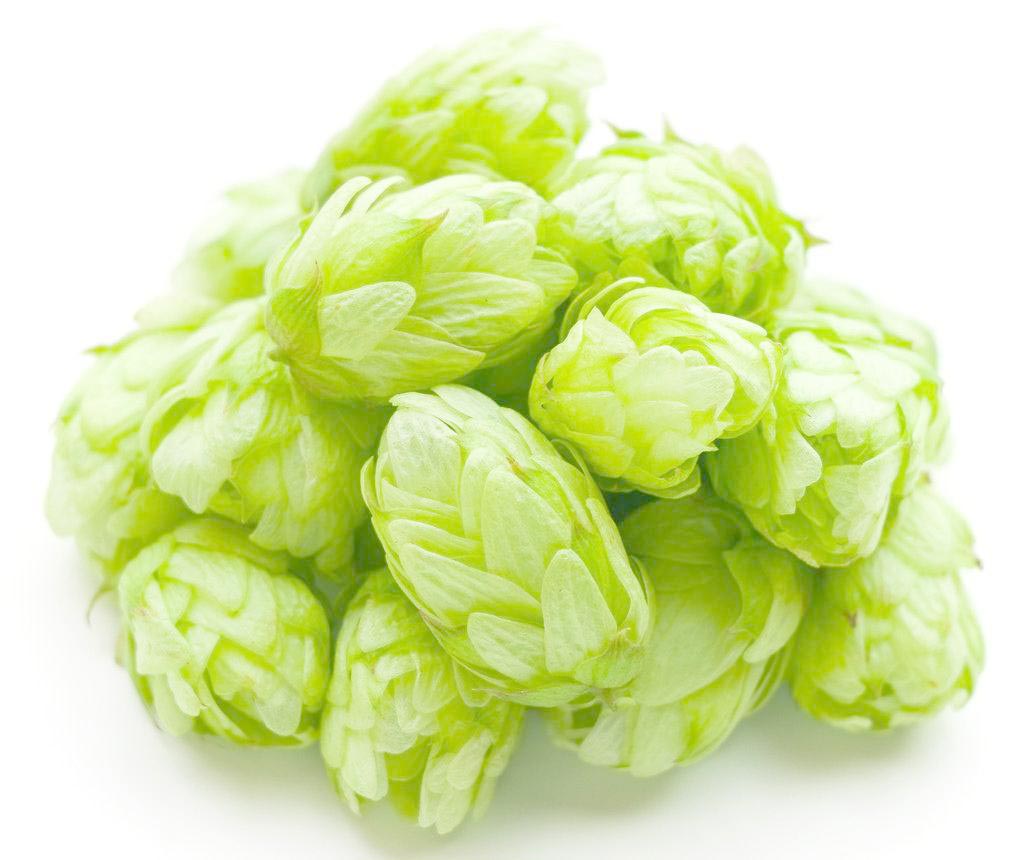 The Third generation Chiller / Brewery Setup Blog / beer equipment for sale, chinese beer equipment manufacturer and suppliers, beer equipment price & cost
The Third generation Chiller / Brewery Setup Blog / beer equipment for sale, chinese beer equipment manufacturer and suppliers, beer equipment price & cost
The 2nd Generation introduced the external, “shell and tube” chiller evaporator. Although commonly used on higher temperature air conditioning systems, the manufacturers were hesitant to approve them for this lower temperature application due to risk of freeze up.
Although the heat exchange ability improved, a new challenge surfaced. They were unable to supply enough glycol flow to the Fermenters. The flow was limited to what could be pushed through the chiller evaporator, often less than optimum for the expanding brewery.
The 2nd generation design also made it a challenge to control the flow of refrigerant to the evaporator. As the number of Fermenters calling for cooling fluctuated, the flow through the evaporator would change, sometimes dramatically. As the flow decreases, the amount of heat exchange in the evaporator decreases, the refrigerant control valve (TXV) must adjust accordingly- often an impossible task.
Many of the challenges have been overcome with improved system design and operating controls. Today you will still find a number of systems manufactured in this “2nd Generation” design, operating quite effectively and reliably. The optimum application for these systems is a constant, steady load with little fluctuation.
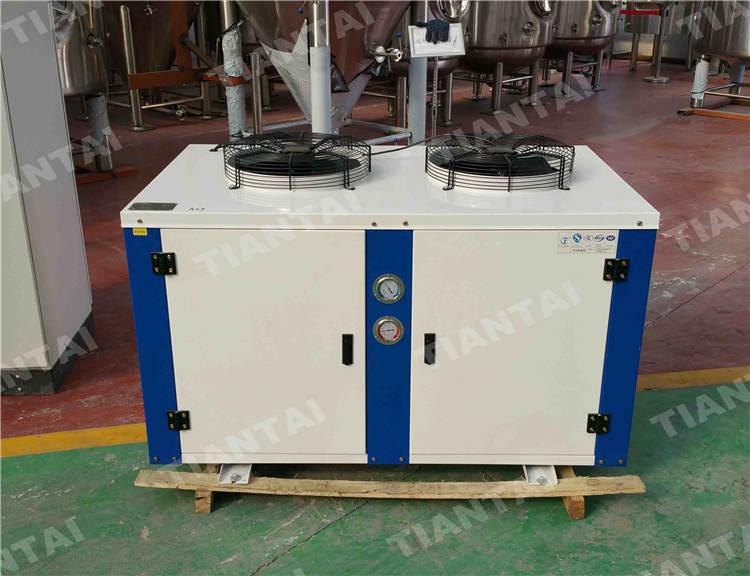 The second generation chiller / Brewery Setup Blog / beer equipment for sale, chinese beer equipment manufacturer and suppliers, beer equipment price & cost
The second generation chiller / Brewery Setup Blog / beer equipment for sale, chinese beer equipment manufacturer and suppliers, beer equipment price & cost
During the brewing process, some brewmaster would like to have the flow meter to learn the flow or quantity of wort, brewing water or beer for monitoring/tax/transferring intention.
The Turbine flowmeter and electromagnetic flowmeter are usually mentioned by brewmasters in this area. Now let’s compare this two kinds of flowmeters in below:A. Application comparing:Electromagnetic flowmeter: Catch the Signal via electromagnetism, no wheel inside, so this is very suitable for high viscosity liquid.. Maximum work temperature: 110℃
Turbine flowmeter: Has wheel inside to measure the signal, so high viscosity liquid easily stuck the wheel, so it is not suitable for wort.
Maximum work temperature: 100℃B. Material comparing:Electromagnetic flowmeter: Only the PTFE Gasket will contact the liquid. So it is no matter if the material or the valve body is food grade or not. The Electromagnetic flowmeter with normal material will be good enough for wort/beer/brewing water.
If you wish everything to be perfect, then please choose the SUS304 model whose price is also not higher much.
Turbine flowmeter: It is wheel inside that will contact the wort/beer. However the wheel material must be carbon steel as SUS304 wheel can not catch the signal. So even when we see that the Turbine flowmeter has food grade body, the wheel is still just carbon steel. So strictly speaking, the Turbine flowmeter is not suitable for wort/beer/brewing water which have high requirement to the sanitation level.SummarizeSo if you plan to monitor the flow of the wort/beer/brewing water, the Electromagnetic flowmeter: is necessary.
If you plan to monitory the flow of the glycol water, waste water etc. turbine flowmeter is just good enough.
More questions please email to below address.
Edited by Jana
Sales manager
brau@cnbrewery.com
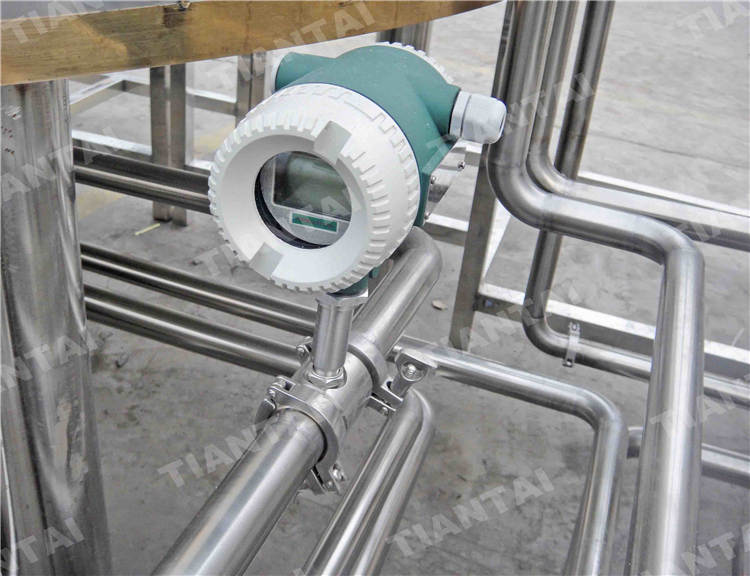 Turbine flowmeter and electromagnetic flowmeter in brewery / Brewery Setup Blog / beer equipment for sale, chinese beer equipment manufacturer and suppliers, beer equipment price & cost
Turbine flowmeter and electromagnetic flowmeter in brewery / Brewery Setup Blog / beer equipment for sale, chinese beer equipment manufacturer and suppliers, beer equipment price & cost
Today, a customer from USA asked me that if we can change our chiller piping to copper line.The glycol system where is possible to use the copper line is the freon copper line. But is our very old model that we had stopping use since the 2014 year.So I am here to try to explain the various chiller models, hoping it help to learn more about them if you are now planing with a brewery plant.In this brewery area, three kinds of chillers will be mentioned: the first generation chiller, the second generation chiller, and the third generation chiller. The third generation chiller is widely used in USA by now which contains a very small glycol tank inside the chiller, so this is why you found that some USA breweries do not have a large glycol water tank. The question refers to the third generation chiller is another topic that we plan to discuss separately next time as it is also related to the wort. Here, this time, we mainly compare the differences between the first generation chiller and second generation chiller as they are adopted based on the similar basement, the only difference is the chiller. Ok, let’s begin:Of course that the second generation chiller is definitely much better than the first generation chiller.With the first generation chiller, the freon comes out from the chiller condenser via the copper piping to the glycol water tank to exchange heat with the glycol water, then come back.With the second generation chiller, the freon is only circulated within the chiller itself, and it is the glycol water mixture that come out from the GWT to the chiller to be cooled by the freon.1. We can see that the compressor in the first G chiller has to send the freon to much longer distance, which will affect the life time of the compressor.2.The second chiller do not need chiller expert to weld/connect the copper line, but just easily connect the PVC/PPR piping, the installation is much easier. Besides, users do not need to prepare the copper line anymore.3.For the first G chiller, when freon first flow into the GWT, the temperature is close to -30℃, the freeze point of glycol water mixture (30% percentage) is -15℃, so the copper line at lowest place has risk to get freezen that will effect the heat exchanging efficiency.4.With the first chilling way, the glycol water mixture do not move in the glycol water tank, which also affect the heat exchanging efficiency. With the second chilling way, since the glycol water is circulated between the glycol water tank and the chiller by pump, the heat exchanging efficiency is higher.Edited by JanaSales managerbrau@cnbrewery.com An quick view of the first generation chiller and second generation chiller / Brewery Setup Blog / beer equipment for sale, chinese beer equipment manufacturer and suppliers, beer equipment price & cost
An quick view of the first generation chiller and second generation chiller / Brewery Setup Blog / beer equipment for sale, chinese beer equipment manufacturer and suppliers, beer equipment price & cost
The specific advantages of the bag-in-tank have led to it being increasingly adopted by microbreweries and brewpubs. This popularity is partly due to the fact that the beer retains its flavour longer after being connected to the beer taps, (many major breweries guarantee up to 12 weeks!), making it ideal for the specialty beers that often have somewhat lower turnover. This is because no extra CO2 needs to be added to the beer, and the beer is kept at a constant temperature and pressure; these factors significantly help preserve the quality of the beer and increase customers’ enjoyment of the flavor.Benefits of the Bag-in-Tank System 1.No need to add CO2 to the beer:
2. CO2 concentration in the beer can be optimised for flavor.
3. Over-saturation of CO2 in the beer no longer possible
4. Save on CO2 cylinders.
5. No more splattering from the beer tap when the tank is empty (caused by accumulation of CO2 in the beer line).
6. Easy to switch to the next tank, and immediately continue serving beer.
7. Reduces costs because polished tanks are not required.
Cleaning tanks is really simple (just rinse with water), and can be carried out on-site.
8. Sharply priced / easy cleaning:
The interiors of the tanks do not need to be hygienically polished, so they are much less expensive. And because the beer only comes into contact with the recyclable bags, it is much simpler and cheaper to clean the tank.
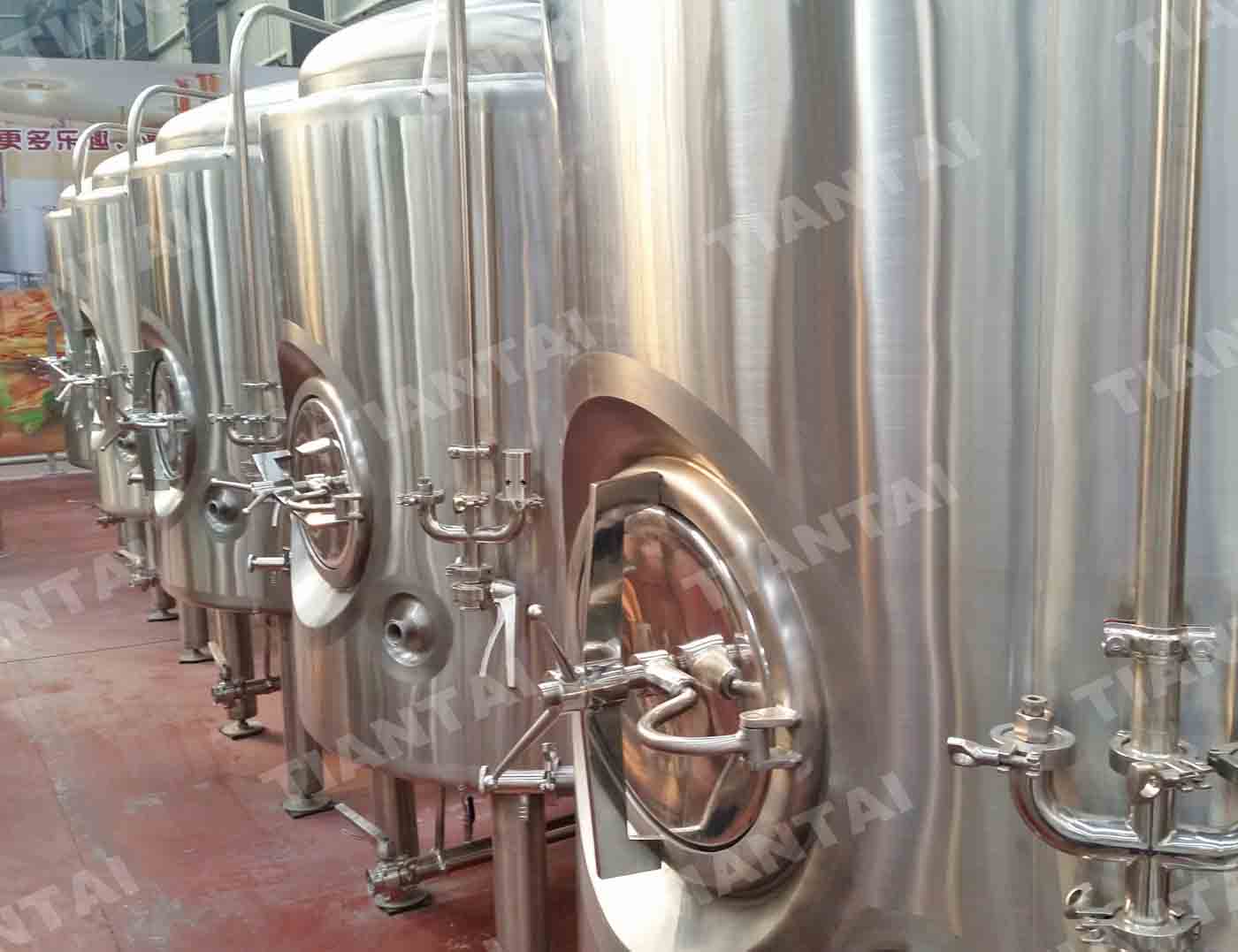 Bag-in-tank / Brewery Setup Blog / beer equipment for sale, chinese beer equipment manufacturer and suppliers, beer equipment price & cost
Bag-in-tank / Brewery Setup Blog / beer equipment for sale, chinese beer equipment manufacturer and suppliers, beer equipment price & cost
Some of our customers may have some questions when they choosing the suitable brewery system. They prefer to buy a littler bigger brewhouse than what they really needed at the beginning of their business. For example, one of our customer from Europe want to buy one 1000L brewhouse, but exactly the 500L brewhouse will fully meet his expected beer production at the beginning of his business. Then the question is: Can I brew 500L with the 1000L brewhouse?
In theory, it is possible to brew 500L with 1000L brewhouse.
As we know for general beers, with 30-40cm grain bed, there will be a smoothly lautering for the wort. Our brewhouse also designed based on this principle. So for brewing half batch of beer, we must consider about the thickness of the grain bed.
After a simple calculation, if brewing 500L on the 1000L brewhouse and based on the ratio of material:water=1:3, the grain bed will be about 20cm. It is a little bit thin, just mean it will need the brewmaster to recycle more repeatedly to get the clear wort. Or you also can try some high plato beers on half batch, then the grain bed will be thicker.
Edited by Laura
Sales Manager in Tiantai Company
Email: trade@cnbrewery.com
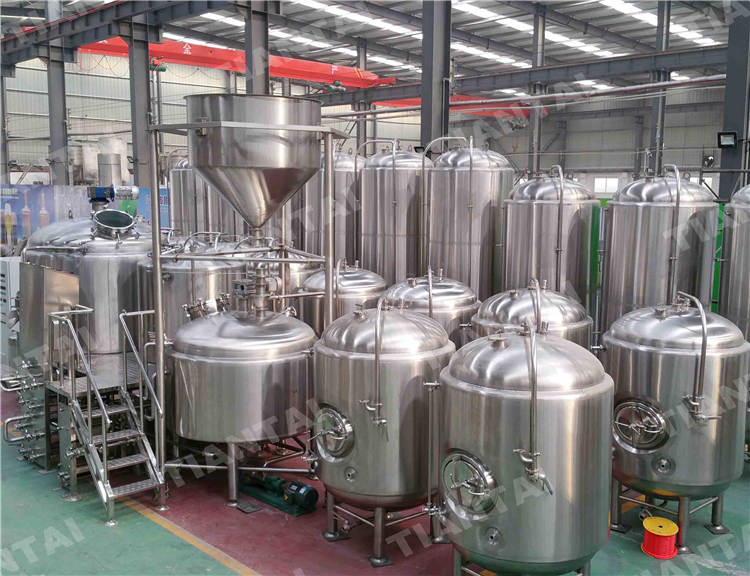 Can I brew 500L with the 1000L brewhouse? / Brewery Setup Blog / beer equipment for sale, chinese beer equipment manufacturer and suppliers, beer equipment price & cost
Can I brew 500L with the 1000L brewhouse? / Brewery Setup Blog / beer equipment for sale, chinese beer equipment manufacturer and suppliers, beer equipment price & cost
During mashing process, the existing of oxygen is the biggest threaten to wort, as wort oxidation bring beer deeper color, rough mouth taste, worse flavor stability, and the foam feature.
Wort oxidation level vary much during mashing as it is usually related to the grain feeding method, milling method and stirring strength. The stirring strength is again affected by the design of the stirrer, rotating speed, the air inlet while draining, transporting of the mashing liquid.What possible cause the wort oxidation during mashing process:1)Wort come into the tank from the top port
2)Quick stirring speed (mash agitator)
3)Transfer the mash liquid with pumpImprovements on mash tun for avoiding the wort oxidation :1)Mounting hydrator
2)Let the wort enter the tank from the bottom of tank
3)Add VFD control for the stirrer motor to adjust the stirring speed
4)Avoiding the cavitation when transfer the mash liquid by pump
Hope this help for people when you are working on the details of the mash tun now.
Jana Wang
Sales Manager
brau@cnbrewery.com
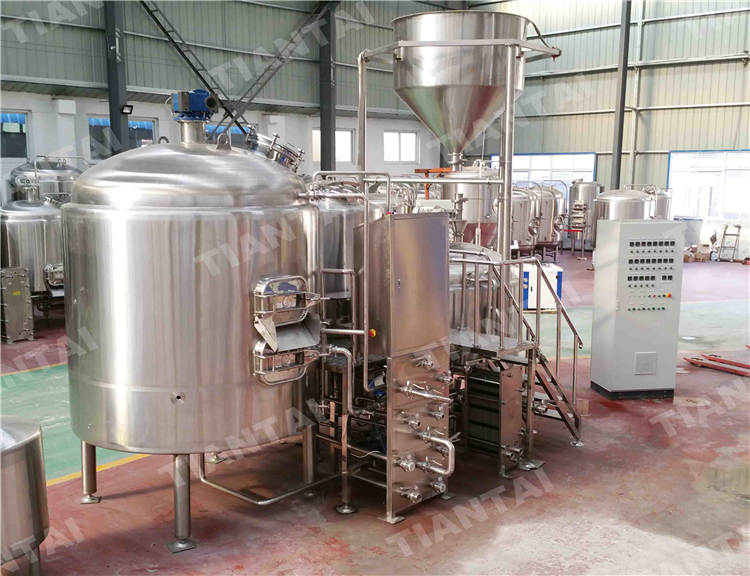 How the mash tun details affect the beer-- wort oxidation during mashing / Brewery Setup Blog / beer equipment for sale, chinese beer equipment manufacturer and suppliers, beer equipment price & cost
How the mash tun details affect the beer-- wort oxidation during mashing / Brewery Setup Blog / beer equipment for sale, chinese beer equipment manufacturer and suppliers, beer equipment price & cost
1. Add more hops during boiling (contribute to cup-hanging character) and boil for suitable time (90-120 minutes)2.Add wheat in the grain bill3.Proper CO2 content in the beer with good dissolution condition.4.Suitable protein rest temperature during mashing: if the wort quality is good, the protein rest temperature should be slightly higher (52℃); if the wort quality is worse, the protein rest temperature should be slightly lower (45℃)5.Getting clear wort after laute. But do not over-sparge the wort6.Cleaning and stable pressure during the filling process7.Avoid the oleaginous mixed into wort or beerEdited by JanaSales managerbrau@cnbrewery.com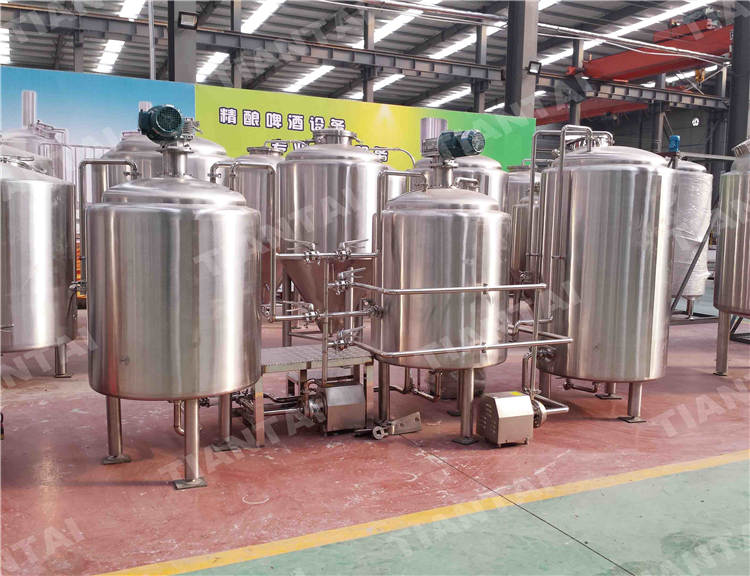 7 ways to improve the foam character of beer / Brewery Setup Blog / beer equipment for sale, chinese beer equipment manufacturer and suppliers, beer equipment price & cost
7 ways to improve the foam character of beer / Brewery Setup Blog / beer equipment for sale, chinese beer equipment manufacturer and suppliers, beer equipment price & cost
As we all know, the structure of brewhouse is various. It can be two vessels, three vessels, four vessels and five vessels. So, how to choose the suitable structure becomes a big concern for the brewer. It will involve in many affecting factors, such as the capacity of brewery, the limitation of brewhouse building, the mashingmethod, the budget etc. Here, we supply the following suggestions for your reference.1. 200-600L breweryThe nano brewery, around 200-600L, is generally used for serve a bar, pub, restaurant,hotel etc. So, the brew building is always limited. In this case, we would recommend mash/lauter whirlpool tun+kettle tun. The whirlpool tun is located under the mash/lauter tun, which can save the floor area efficiently. And, this structure can achieve fly sparge and natural lauter without hot liquor tank and grant. It is really practical.2.700-2500L breweryFor 700-2500L brewery, there is independent brew building for install the equipment usually, so the hot liquor tank is suggested to add base on mash/lauter tun and kettle/whirlpool tun. The hot liquor tank can recycle the hot water from the heat exchanger. It can save the energy as much as possible. Considering the capacity is not very big and the customers always brew 1-2 batch per day, it is not necessary to equip a big hot liquor tank. Single batch has worked well.3.3000-4000L breweryAs the capacity increases, most of brewers prefer to brew 3-4 batches per day for a 3000-4000L brewery in order to make full of use the equipment. Three vessels with double batches hot liquor tank is more suitable, such as the mash/kettle tun+lauter tun+whirlpool tun(with double batches hot liquor tank).4.>=5000L breweryNo doubt, four vessels or five vessels brewhouse is generally applied to more than 5000L brewery. 2-3 batches can be going at the same time. At the same, the configuration of every tank is a little different. For example, the motor of rake is fixed on the bottom instead of bottom.
If you have any different comments or better suggestions to discuss with you, please feel free to contact us.
Edited by Vicky
Sales manager in Tiantai Company
Email: tank@cnbrewery.com
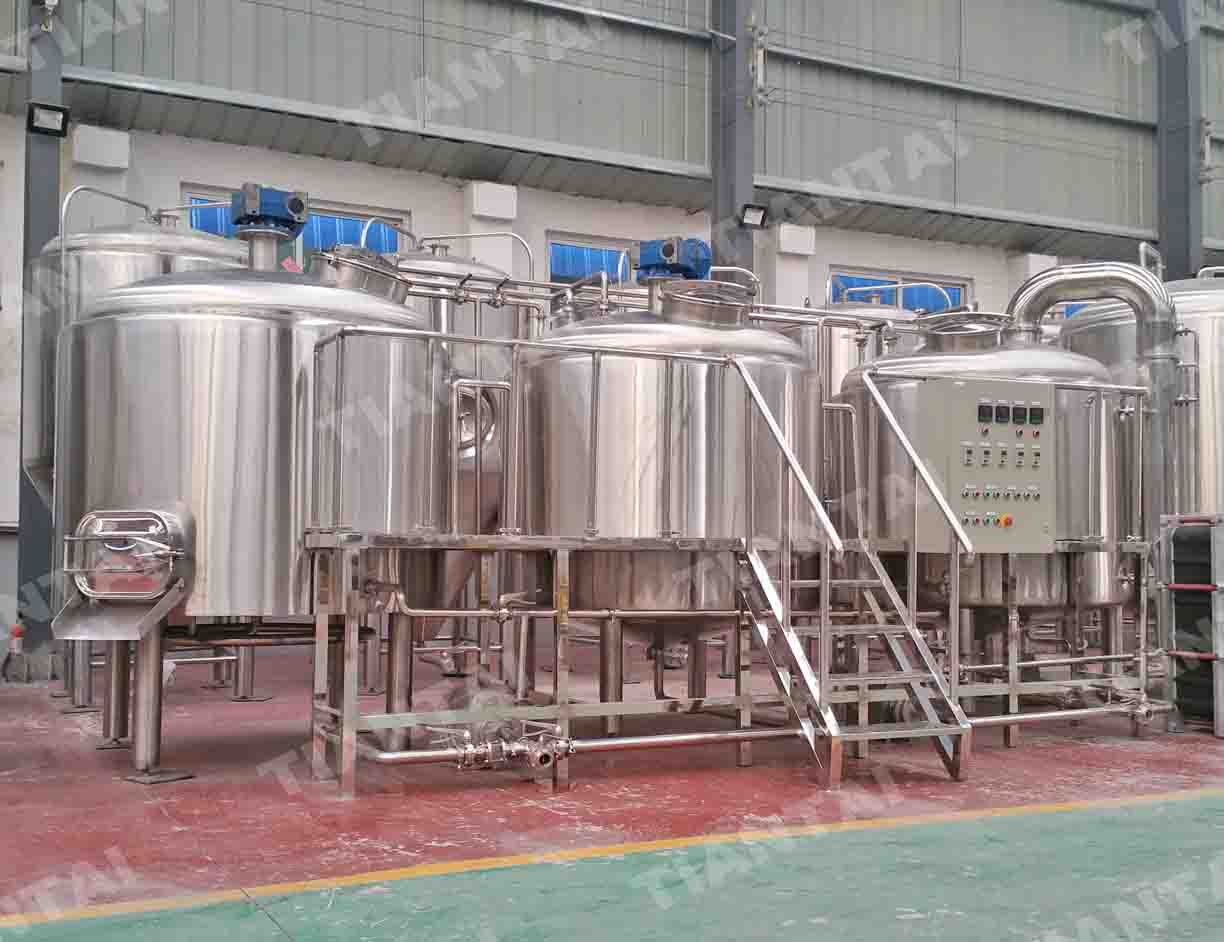 How to decide the structure of brewhouse? / Brewery Setup Blog / beer equipment for sale, chinese beer equipment manufacturer and suppliers, beer equipment price & cost
How to decide the structure of brewhouse? / Brewery Setup Blog / beer equipment for sale, chinese beer equipment manufacturer and suppliers, beer equipment price & cost
If the mash tun and lauter tun is separated, the mash needs be pumped from mash tun to lauter tun. Before pumping, some professional and experienced brewers would fill the hot water from the lauter tun bottom primarily, until the hot water level is higher than the false bottom. On the one hand, the hot water can eliminate the air between the bottom and false bottom to avoid the wort aeration. On the other hand, the hot water can also pre-heat the false bottom&lauter tun and support the mash in order to guarantee the normal lautering.Edited by VickySales Manager in Tiantai CompanyEmail: tank@cnbrewery.com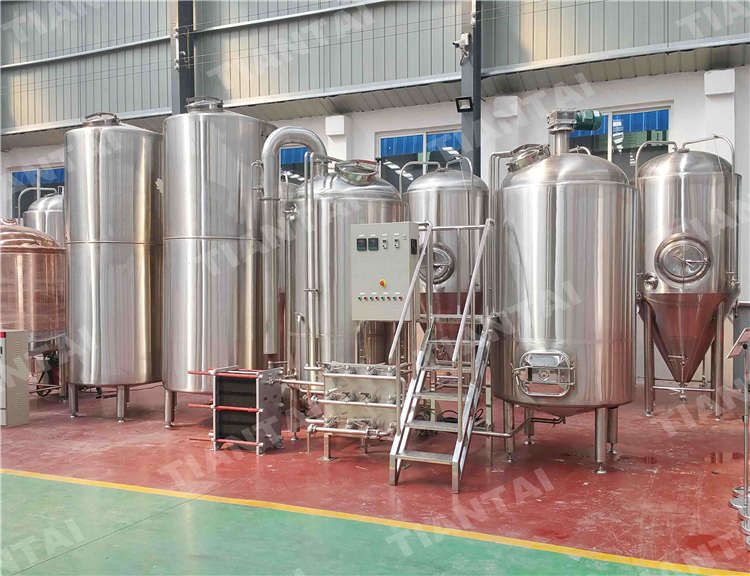 Why the hot water needs to pumped from the lauter tun bottom before lautering / Brewery Setup Blog / beer equipment for sale, chinese beer equipment manufacturer and suppliers, beer equipment price & cost
Why the hot water needs to pumped from the lauter tun bottom before lautering / Brewery Setup Blog / beer equipment for sale, chinese beer equipment manufacturer and suppliers, beer equipment price & cost
When brewing the beer, it is necessary to have a flow meter. Where will we use the flow meter in a beer brewery?
The first one is before water inlet for the Mash Tun and also the Sparging water for the Lauter tun. The next one is after the heat exchanger. We can know how much wort has gone into the fermentation tanks. Sure many tanks have the sight glass level to help to know the quantity of beer brewing water or wort quantity. But flow meter in a brewery makes it more exactly.
 Flow meterFlow measurement is the quantification of bulk fluid movement. Flow can be measured in a variety of ways. Positive-displacement flow meters accumulate a fixed volume of fluid and then count the number of times the volume is filled to measure flow. Other flow measurement methods rely on forces produced by the flowing stream as it overcomes a known constriction, to indirectly calculate flow. Flow may be measured by measuring the velocity of fluid over a known area.
Flow meterFlow measurement is the quantification of bulk fluid movement. Flow can be measured in a variety of ways. Positive-displacement flow meters accumulate a fixed volume of fluid and then count the number of times the volume is filled to measure flow. Other flow measurement methods rely on forces produced by the flowing stream as it overcomes a known constriction, to indirectly calculate flow. Flow may be measured by measuring the velocity of fluid over a known area.
For liquids, various units are used depending upon the application and industry, but might include gallons (U.S. or imperial) per minute, liters per second, bushels per minute or, when describing river flows, cumecs (cubic metres per second) or acre-feet per day. In oceanography a common unit to measure volume transport (volume of water transported by a current for example) is a sverdrup (Sv) equivalent to 106 m3/s.
Modern innovations in the measurement of flow rate incorporate electronic devices that can correct for varying pressure and temperature (i.e. density) conditions, non-linearities, and for the characteristics of the fluid.Magnetic flow metersMagnetic flow meters, often called "mag meter"s or "electromag"s, use amagnetic field applied to the metering tube, which results in a potential difference proportional to the flow velocity perpendicular to the fluxlines. The potential difference is sensed by electrodes aligned perpendicular to the flow and the applied magnetic field. The physical principle at work is Faraday's law of electromagnetic induction. The magnetic flow meter requires a conducting fluid and a nonconducting pipe liner. The electrodes must not corrode in contact with the process fluid; some magnetic flowmeters have auxiliary transducers installed to clean the electrodes in place. The applied magnetic field is pulsed, which allows the flowmeter to cancel out the effect of stray voltage in the piping system.
So a magnetic flow meter is good to use for brewing beer. Hope the above will help you to choose a flow meter when you try to buy beer brewing equipment.
Thanks for your reading.
Edited by Ivy
beer@cnbrewery.com
What is flow meter / Brewery Setup Blog / beer equipment for sale, chinese beer equipment manufacturer and suppliers, beer equipment price & cost




















